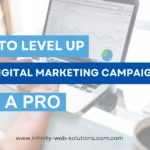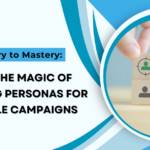Customer lifetime value (CLV) is a vital metric in business. It measures the total value a customer brings to their relationship. Therefore, CLV is calculated by estimating future revenue and subtracting acquisition and servicing costs. It helps businesses understand long-term profitability and make informed decisions about resource allocation. Furthermore, CLV, a vital metric in business, enables businesses to understand customer value. By predicting future revenue and deducting costs, CLV guides resource allocation decisions effectively. Consequently, it maximizes the value derived from customer relationships.
What is Customer Lifetime Value (CLV)?
Customer Lifetime Value (CLV) is a marketing and business metric that represents the total value a customer will bring to a company over their entire relationship with the business. It is a calculation that estimates the total revenue a business can expect to earn from a customer over the course of their relationship, subtracting the costs associated with acquiring, servicing, and retaining the customer.
In essence, CLV is a way of measuring the long-term profitability of a customer, and it helps businesses make informed decisions about how to allocate resources, prioritize marketing efforts, and develop effective customer acquisition and retention strategies. By understanding and maximizing CLV, businesses can build sustainable growth and improve customer satisfaction over the long term.
What are the Reasons to Know Your Customer’s Lifetime Value (CLV)?
There are several reasons why businesses should know their customer lifetime value (CLV):
- Better allocation resources
By knowing the potential value of each customer, businesses can prioritize their marketing efforts and focus on acquiring and retaining the most profitable customers. This allows businesses to allocate their resources more effectively and efficiently.
- Improved customer acquisition and retention strategies
CLV helps businesses develop more effective customer acquisition and retention strategies. By identifying the most valuable customers, businesses can develop targeted marketing campaigns and personalized customer experiences that are more likely to attract and retain these customers.
- Increased customer satisfaction
By focusing on the most valuable customers, businesses can provide a better customer experience that is tailored to their needs and preferences. This can lead to increased customer satisfaction, loyalty, and advocacy.
- Improved revenue and profitability
By maximizing the value of their customer base, businesses can improve their revenue and profitability over the long term. This is because valuable customers are more likely to make repeat purchases, refer others to the business, and provide valuable feedback that can help the business improve its products and services.
Why is Customer Lifetime Value Important to Your Business?
Customer Lifetime Value (CLV) is important to businesses for several reasons such as:
- Helps identify profitable customers
CLV allows businesses to identify the most profitable customers, which helps them focus their resources on acquiring and retaining those customers.
- Provides a long-term perspective
CLV provides a long-term perspective on customer profitability, which helps businesses make more informed decisions about resource allocation and investment.
- Improve customer acquisition and retention strategies
By understanding CLV, businesses can develop more effective customer acquisition and retention strategies that are tailored to the needs and preferences of their most valuable customers.
- Enables personalized customer experiences
CLV allows businesses to personalize the customer experience for their most valuable customers, which can lead to increased loyalty and advocacy.
- Increases revenue and profitability
By maximizing CLV, businesses can increase revenue and profitability over the long term, which is essential for sustainable growth and success in a competitive marketplace.
The lifetime value of a customer is determined by both the customer’s satisfaction with a product and the company’s ability to retain frequent users. Calculating a customer’s lifetime value serves as an assessment of your current sales and efforts. By establishing this baseline, you can plan for improvements in the customer journey that will result in future cost savings and revenue increases.
How Do You Calculate (CLV)?
Calculating customer lifetime value (CLV) involves estimating the total revenue a customer will generate for a business over their entire relationship and then subtracting the costs associated with acquiring, servicing, and retaining that customer. There are several ways to calculate CLV, but a commonly used formula is as follows:
CLV = (Average Value of a Sale) x (Number of Repeat Transactions) x (Average Retention Time)
Where:
- Average Value of a Sale: This is the average amount of revenue generated from a single transaction.
- The number of Repeat Transactions. This is the estimated number of times a customer will make a purchase over their entire relationship with the business.
- Average Retention Time. This is the average amount of time a customer is expected to remain a customer of the business.
Once these values are estimated, the formula can be used to calculate the CLV for each customer. For example, if the average value of a sale is $50, the estimated number of repeat transactions is 5, and the average retention time is 2 years, the CLV would be calculated as follows:
CLV = $50 x 5 x 2 = $500
This means that the estimated lifetime value of this customer to the business is $500. It is worth noting that this formula is a simplification. Thus, there are no factors that may need to be considered when calculating CLV. Some of such as customer acquisition costs and customer churn rates. Nonetheless, this formula provides a useful starting point for estimating the CLV of a customer.
How to Improve Your Customer Lifetime Value?
To enhance your customer lifetime value (CLV), focus on boosting customer revenue and minimizing acquisition and retention costs.
Here are some strategies businesses can use to improve their CLV:
- Provide excellent customer service
Excellent customer service plays a crucial role in enhancing CLV. It fosters higher customer satisfaction, promotes loyalty, and encourages repeat purchases.
- Personalize the customer experience
Personalizing the customer experience based on their preferences and needs can also help increase customer satisfaction.
- Upsell and cross-sell
Upselling and cross-selling to existing customers can increase average sale value, improving customer lifetime value.
- Reward customer loyalty
Rewarding customer loyalty with discounts, exclusive promotions, and other incentives can help enhance customer repeat purchases and retention.
- Offer excellent after-sales support
Another way to improve customer lifetime value is to offer excellent after-sales support, such as product training, troubleshooting, and customer services.
- Collect and use customer feedback
Collecting and using customer feedback to improve products, services, and customer experience can help increase CLV.
Increasing the Significance of Customer Experience with Infinity Web Solutions
Finally, you don’t need to get bogged down in complex calculations; simply consider the value that a customer provides over the course of their relationship with you. You can begin to improve the key drivers of customer lifetime value by understanding the customer experience and measuring feedback at all key touchpoints.
At Infinity Web Solutions, we believe that customer experience is a critical factor in why customers return to a brand. You can easily increase customer lifetime value by focusing on customer experience – we’ve discovered that customers who rate an experience with five out of five stars are over two times as likely to buy again, and satisfied customers are willing to spend more.










